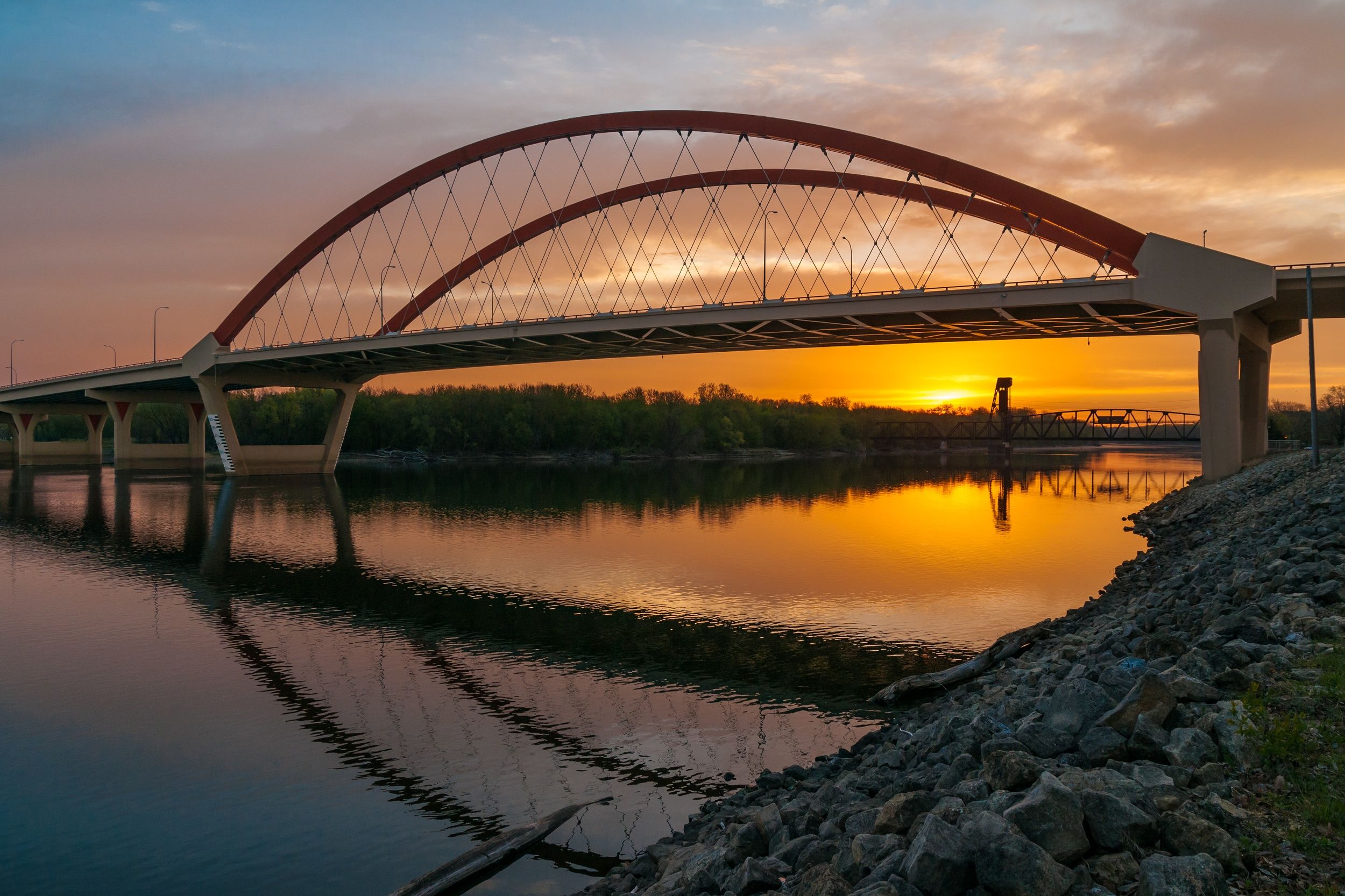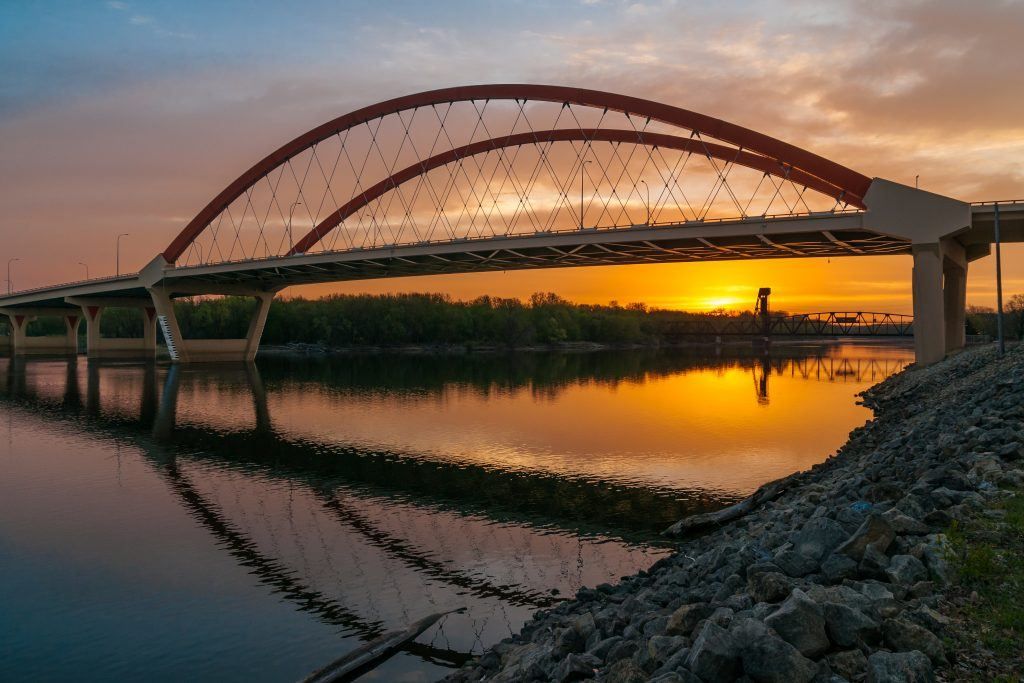I never really thought about how much rivers play into my photography until another photographer pointed out that I “have a lot of river pictures.” Initially, that statement took me a bit by surprise. I mean, I don’t think I’ve ever said, “I’m going out to photograph a river.” When I head out with my camera, my intended subjects are usually architecture, the night sky, wildlife, and trains. A river occasionally (okay, frequently) happens to be present in the best places I can find to shoot those subjects.
As I thought about it, I realized that it’s not an accident. Some of it is opportunity. I live in a town with three rivers flowing through it, and there are at least five more within 30 miles of my house. Easy access helps, but there’s another reason I keep going back to the water.
Rivers offer an extraordinary number of different photo opportunities!
In this guide, we’ll discuss:
- what equipment you’ll need to capture outstanding images of rivers,
- different types of shots that can be enhanced by a river running through them,
- ideas for framing the river in your scenes,
- other elements to include in your shot, and
- times of day that works well for river photography.
Recommended Reading: If you’d like to improve your long exposure techniques for landscape photography, grab a copy of Photzy’s Complete Guide to Long Exposure Photography.
Safety
Being a dad first, and a photographer about 43rd in life, I feel compelled to mention safety when photographing in potentially hazardous environments. Are rivers the most dangerous thing out there? No, but there are risks when shooting near water, especially rapidly moving water. Please keep yourself safe. Pay attention to the terrain and watch for unsteady footing. If you decide to wade in, don’t go too deep and be aware of the current. If you can, bring a friend with you. Make sure someone not going with you knows where you’ll be and when you plan to return. Carry a cell phone with you in case something happens. Use common sense.
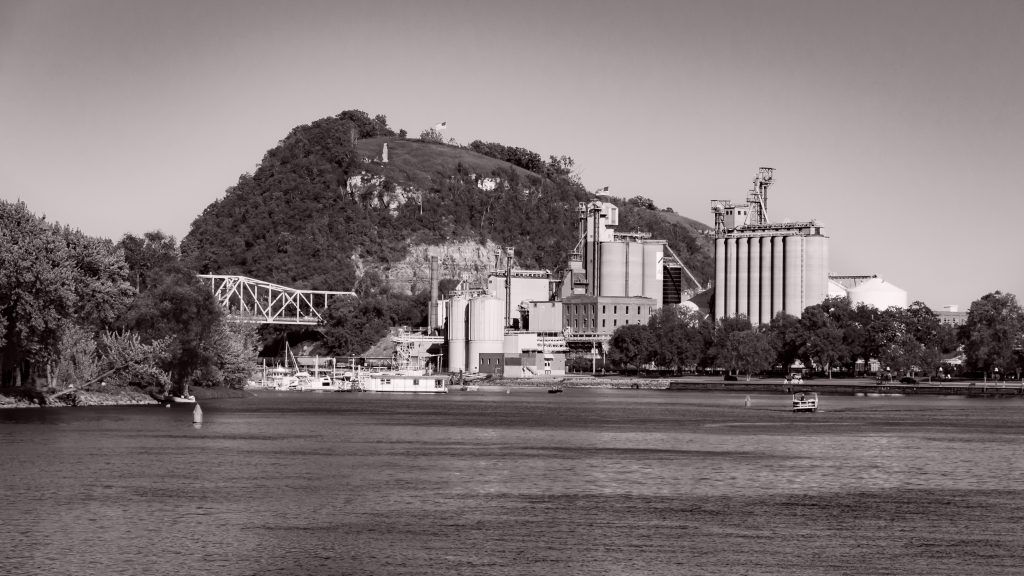
Photograph by Aaron Seefeld
Rivers offer an extraordinary number of different photo opportunities!
Equipment
- A camera – Just about any camera will suffice, but ones that let you control the settings are better suited for the job.
- An appropriate lens – What does this mean? It depends on what you’re trying to capture. If you’re shooting a landscape scene with a river meandering through it, you’ll want a wide to ultra-wide lens with a narrow aperture to maintain depth of field. If you’re photographing wildlife or activity along the shore, you may want a normal to telephoto lens with a wider aperture to isolate your subject.
- A way to hold the camera still – Some shots may work handheld, but using a tripod, beanbag, or any other solid support will help ensure your camera is steady, especially if you need longer exposures to adequately expose your image. It also helps make sure the scene stays composed in the way you want it to be.
- Cable release – Even on a tripod, cameras do move when you press the shutter release. If you don’t have a cable release, most cameras have a timer release and/or a mirror lock-up function that can be used instead.
- Lens cloths – When you’re near moving water, there’s a chance your lens’s front element will get wet. Have some dry, lint-free lens cloths on hand to clean off the glass.
- Rain gear – Your lens’s front element isn’t the only thing that’s liable to get wet when you’re near a river, especially if a waterfall or rapids are nearby. Keep yourself dry to stay comfortable during your outing. Keep your gear dry to prevent it from suffering water damage.
- Spare batteries and memory cards – It has been said many times before: you don’t want an outing to end early because you’re out of power or storage.
- Filters – These are optional, but they may be beneficial. Polarizing filters can reduce glare and increase contrast and color saturation in a scene. Neutral density filters allow you to get longer shutter speeds, which is good for more of a silky ribbon effect of water. Graduated neutral density filters can help reduce the contrast between a bright sky and dark foreground.
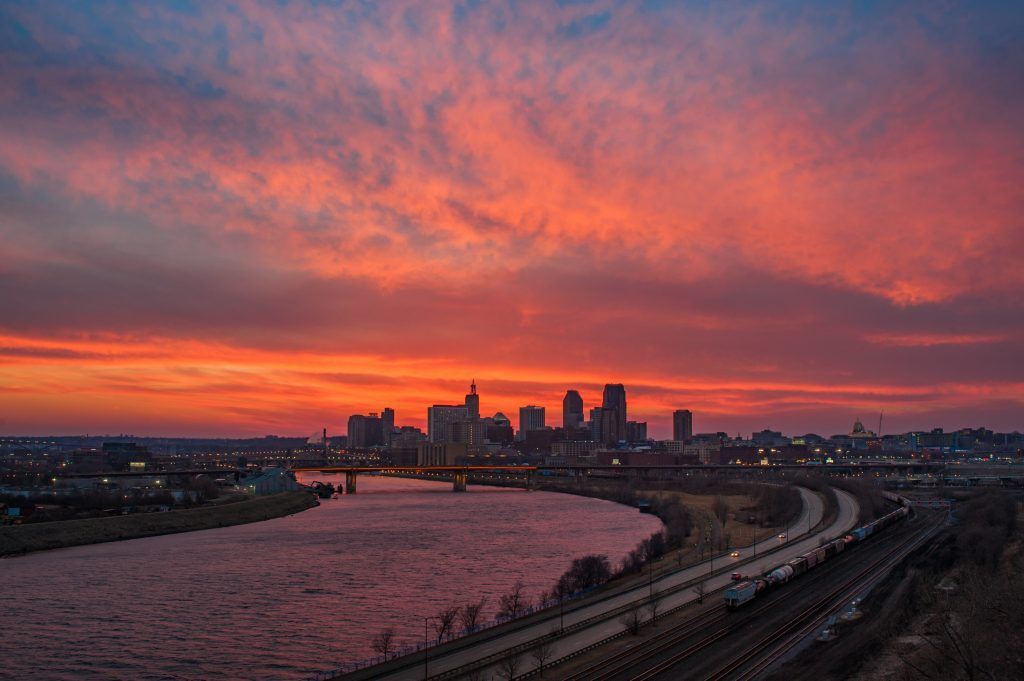
Photograph by Aaron Seefeld
Ideas for Utilizing Rivers in Your Photography
Cityscapes
A number of towns and cities were built along rivers, so look for locations that would allow you to use the river as a composition tool to take your viewer into the city. Find a spot where the river forms a leading line to the edge of town. Getting up above the river valley can open up these types of opportunities for you.
A number of towns and cities were built along rivers, so look for locations that would allow you to use the river as a composition tool to take your viewer into the city.
Another option is to frame the scene from the point of view of someone on a boat, traveling toward town. You don’t necessarily have to be in the water to get these types of shots. Find spots where the river bends to create the illusion of being in the middle of the river. The image on the next page looks like it could have been taken from a boat, but was actually shot from the shore!
Key Lesson: Take advantage of the reflections that rivers provide. The water will reflect what’s above it, which is mostly going to be sky. That’s what gives the water its blue color during the day, but it will take on the red, orange, and yellow hues of a sunrise or sunset. Try to find angles that also reveal the reflections of the scenery in town. Daytime shots will show some detail in the trees, buildings, and bridges, while lights dominate night shots. Shooting during the blue hour can help give you the best of both worlds!
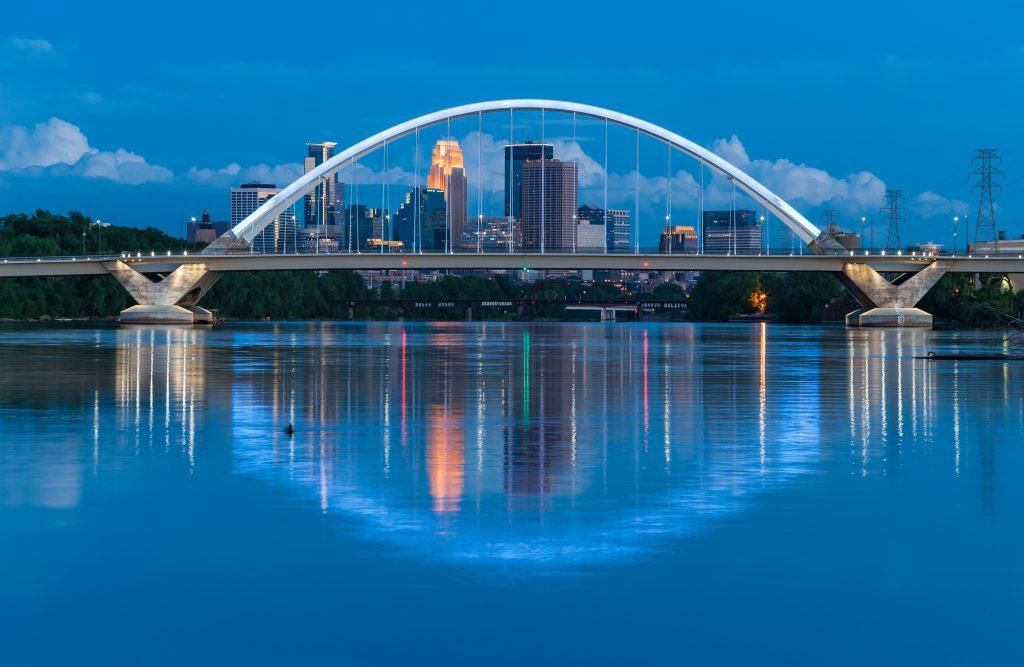
Photograph by Aaron Seefeld
River Traffic
I mentioned earlier that older cities were built along rivers. The reason is simple. At the time, waterways were the most efficient conduit for transporting materials and goods. Trucks, trains, and airplanes now carry most of our goods from one location to another, but rivers still play a role in transporting commodities. They’re also still used for recreational transportation.
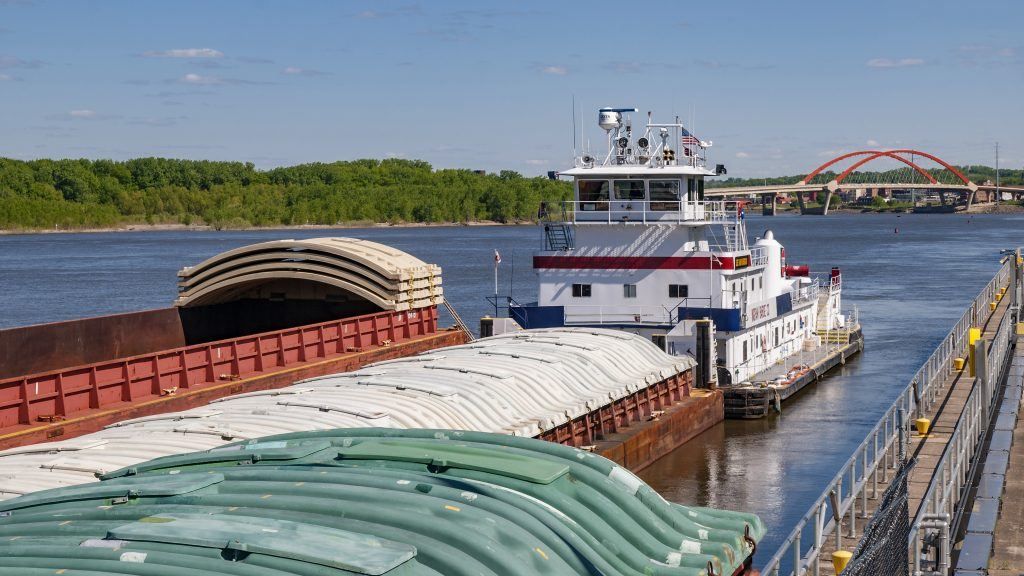
Photograph by Aaron Seefeld
Barges and riverboats can be found traveling from city to city whenever the water is open, and can make for an intriguing subject. River traffic doesn’t always follow a set schedule, so finding vessels to photograph can be a bit of a challenge. Fortunately, there are websites and apps out there that will show you where river traffic is in real time, so you don’t have to wander out and hope something will come through. Some of these sites allow you to create customized alerts when certain types of boats, or even specific vessels, are near you!
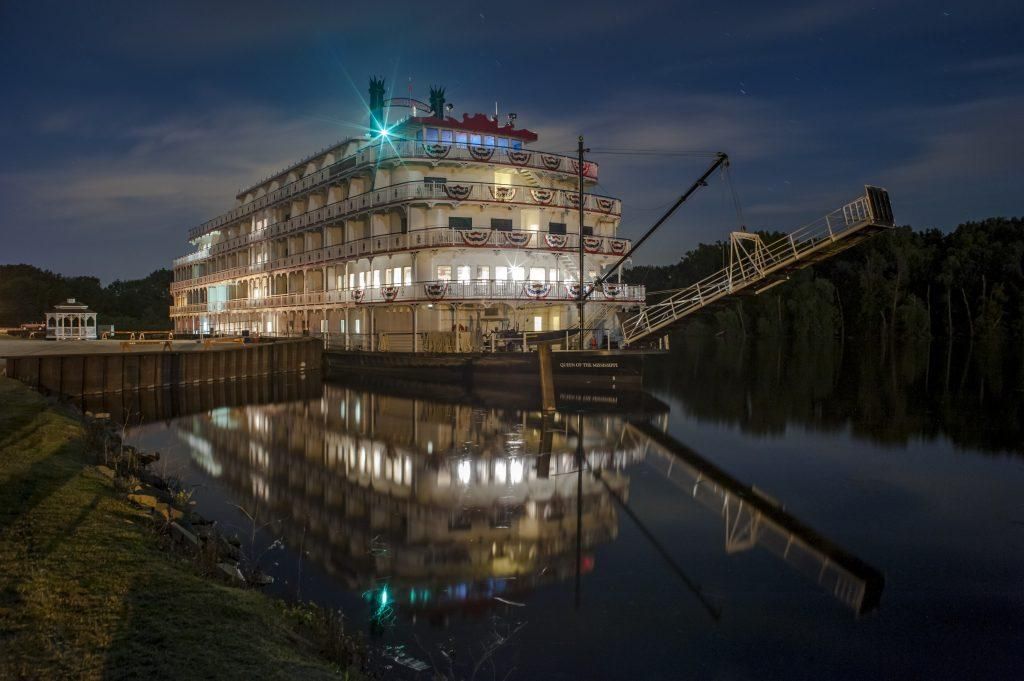
Photograph by Aaron Seefeld
This image taught me the value that these tracking sites can offer to photographers. On this particular evening, the Queen of the Mississippi was scheduled to come through my hometown right around sunset, which I thought could make for an interesting image. I set up along the river and waited, and waited, and waited. Before I knew it, it was dark and the boat hadn’t come through. Was it just about to come around the bend? Did I miss it? What now? I didn’t want to go home empty-handed, so I took a chance and drove down river toward the port it was coming from. I found the boat still moored more than six hours after she was scheduled to depart. I’m happy with the shot I was able to get, but if I had known about vessel tracking sites earlier, I could have started my evening in the right spot.
Wildlife
Whether the setting is urban or rural, wildlife abounds near the river’s edge. Deer, geese, ducks, and birds of all species can be found near rivers year round. Birds will often follow major waterways during their migration seasons. I’m fortunate to have Bald Eagles and American White Pelicans make seasonal stops in my area. They nest along the river for a few weeks, which provides opportunities to see them interacting with the environment around me. Including a river in a scene with wildlife can provide a great sense of place and context. Just do your best not to disrupt the animals, especially if they’re in their nests or bedded down.
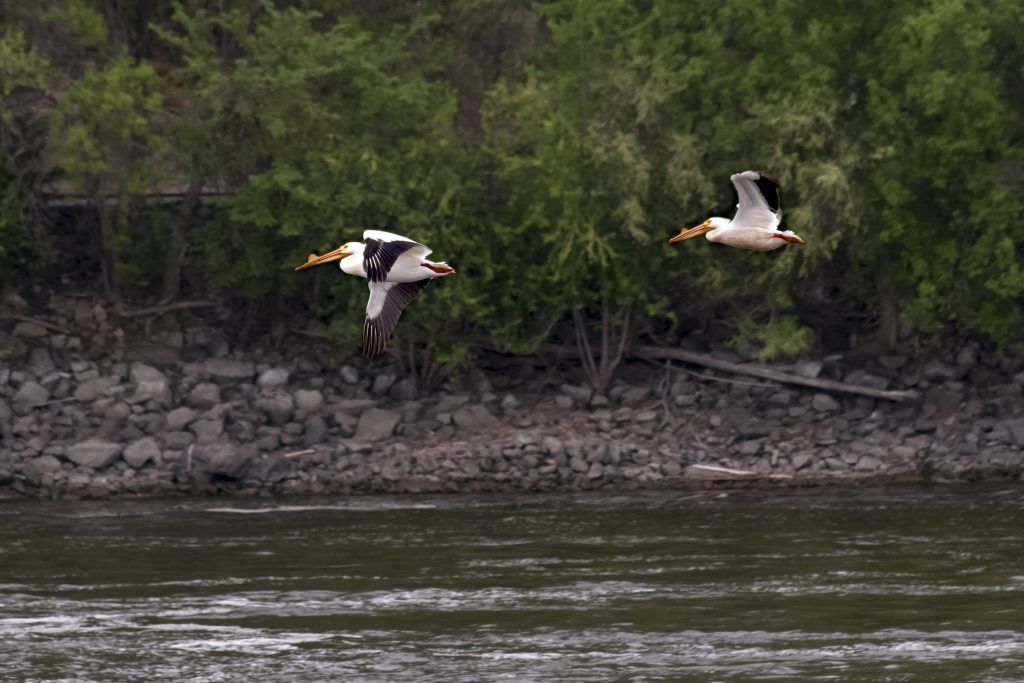
Photograph by Aaron Seefeld
Waterfalls
Waterfalls are among the most awe-inspiring phenomena in nature. Every waterfall is different, and each possesses its own beauty. One thing they all demonstrate is the sheer power of moving water. The image below shows the movement of the water and the turbulence generated in the wake at the bottom of each drop. The building to the right is a flour-mill that has been in continuous operation since 1853. Combining elements of nature with those that are manmade can make for some pleasing compositions.
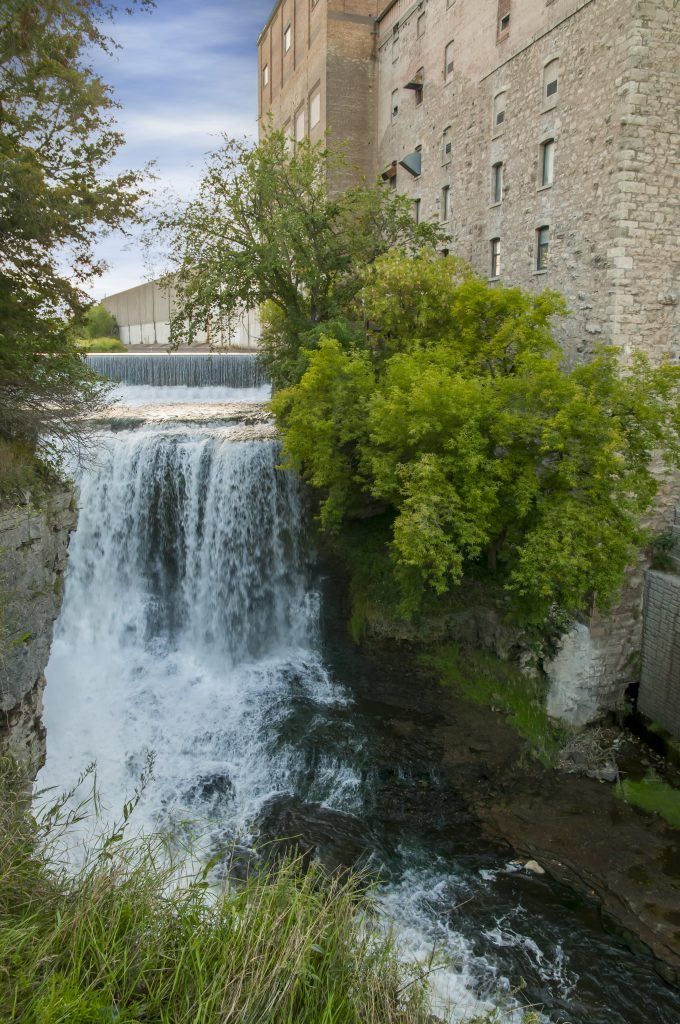
Photograph by Aaron Seefeld
When photographing waterfalls, you have a choice in whether to try and stop the motion of the water or to go for the silky ribbon effect. If you want to stop the water, you’ll need a faster shutter speed, so shooting during the day would be better. There’s a risk of blowing out the sky to adequately expose the falls during the day, so try to minimize its presence in your image. If you go for the ribbon effect, low light is your best friend. You’ll need a slower shutter speed to smooth out the flowing water. Go with a narrower aperture and shoot closer to the golden and blue hours, or use neutral density filters to block out sunlight.
Landscapes
Including a river that meanders through the scene, guiding viewers along its path, can enhance landscapes.
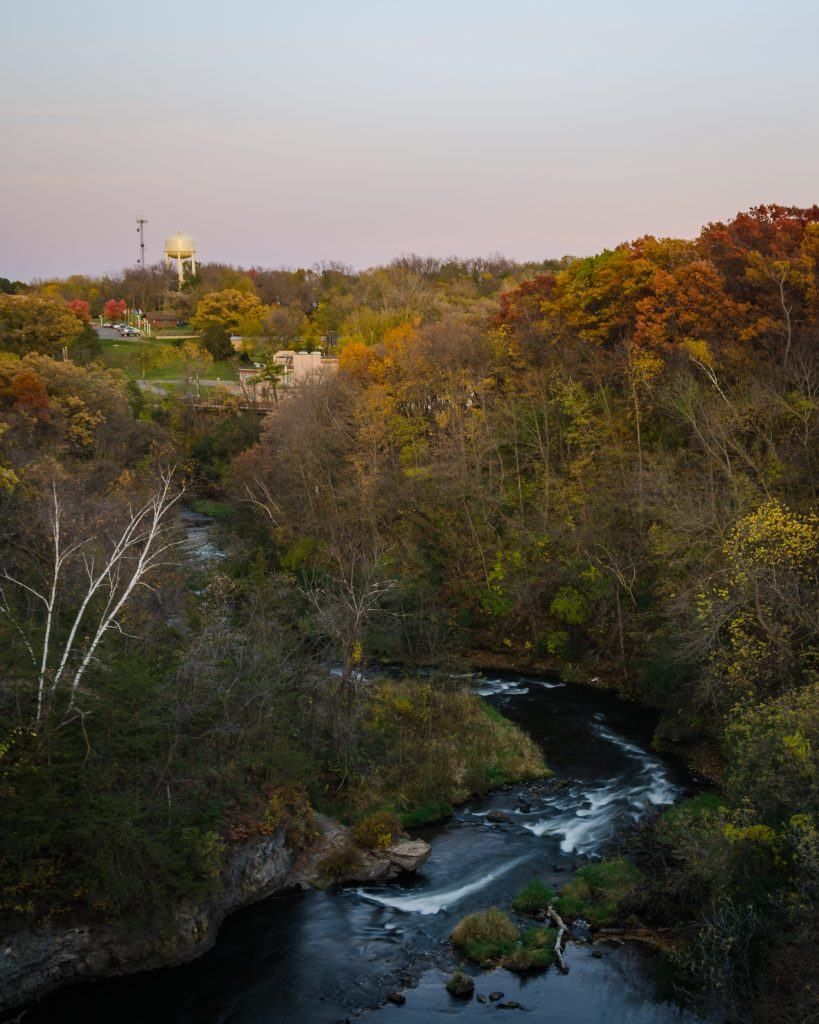
Photograph by Aaron Seefeld
The image above is an attempt to illustrate this point. It was taken just after sunset from a wobbly pedestrian bridge on a breezy evening. The decision to use portrait orientation is a bit unconventional, but there was too much dead space to both the left and right sides of the river to use it as an effective guide in landscape orientation. The curves of the river lead you down through the bluffs to the Veterans’ Home and water tower at the bottom of the hill. I used a circular polarizing filter on this image to increase the contrast of the flowing water and to bring out some color in the sky. Without the filter, the water was grayer and didn’t show off the white areas where the water flows over the rocks. Also, the purple and blue colors in the Belt of Venus were lost in the sky.
Including a river that meanders through the scene, guiding viewers along its path, can enhance landscapes.
Another way to add variety to your river images is to shoot the same locations at different times of the year. For example, I shot that photograph in mid-October. If I had been there a week or two earlier, there would have been more leaves on the trees, which would have completely obscured the river in the middle part of the image. The trade-off would have been more interesting color in the scene. If I had been there a couple of weeks later, most of the leaves would have been gone, which would have revealed the river where it exits the frame, but there would be less color along the valley. Visit the same places periodically throughout the year and you’ll wind up with several unique images.
Human Interaction
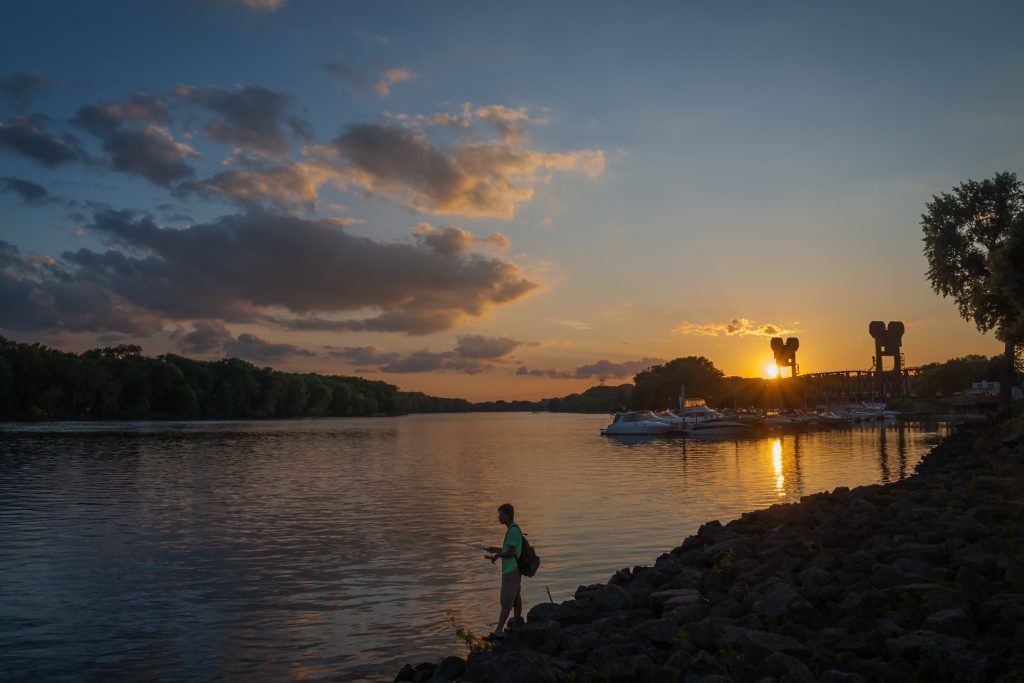
Photograph by Aaron Seefeld
One final suggestion is to take any of the scenes above and add some human interaction to it. Fishing is an activity that can create an iconic image along a smaller river or stream. Capture your children skipping stones on the water. If no one else is around, have the friend you brought with you go for a stroll along the riverbank. Be creative and
look for any activity that can add interest to the shot.
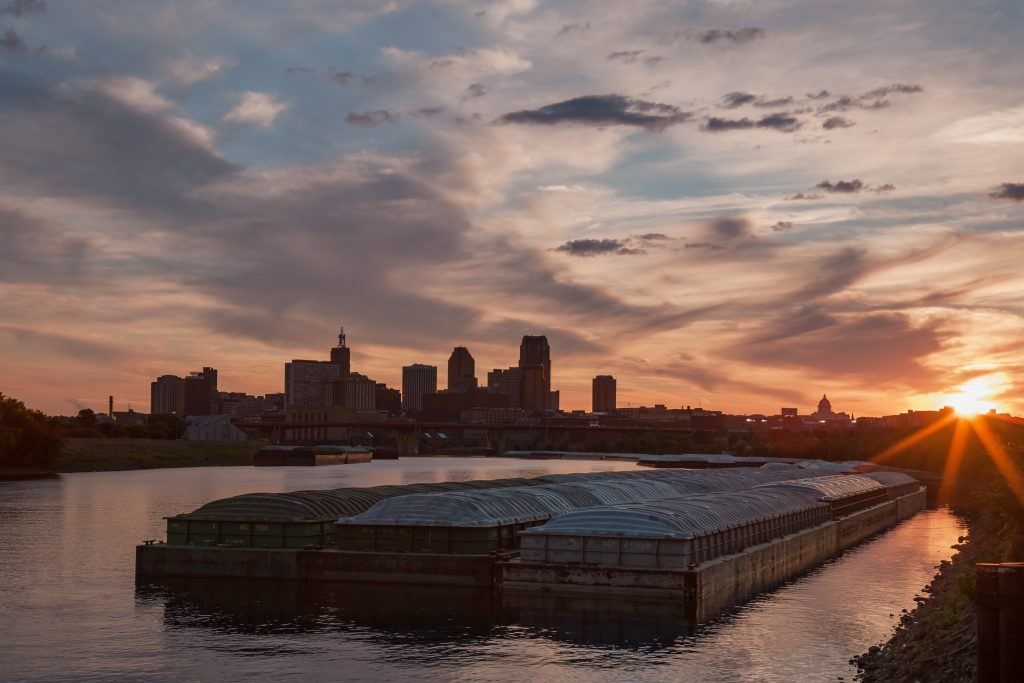
Photograph by Aaron Seefeld
Try It Out!
Now that we’ve talked about how you can utilize rivers in your photography, your mission is to find a river and use it to enhance a scene.
- Look for a vantage point where the river can be used as a composition tool to guide your viewer through the image or to your intended subject.
- Take advantage of the texture and reflections provided by the river.
- Shoot at conducive times of the day for the type of shot you want.
- Most of all, have fun and enjoy the great outdoors!
Recommended Reading: If you’d like to improve your long exposure techniques for landscape photography, grab a copy of Photzy’s Complete Guide to Long Exposure Photography.
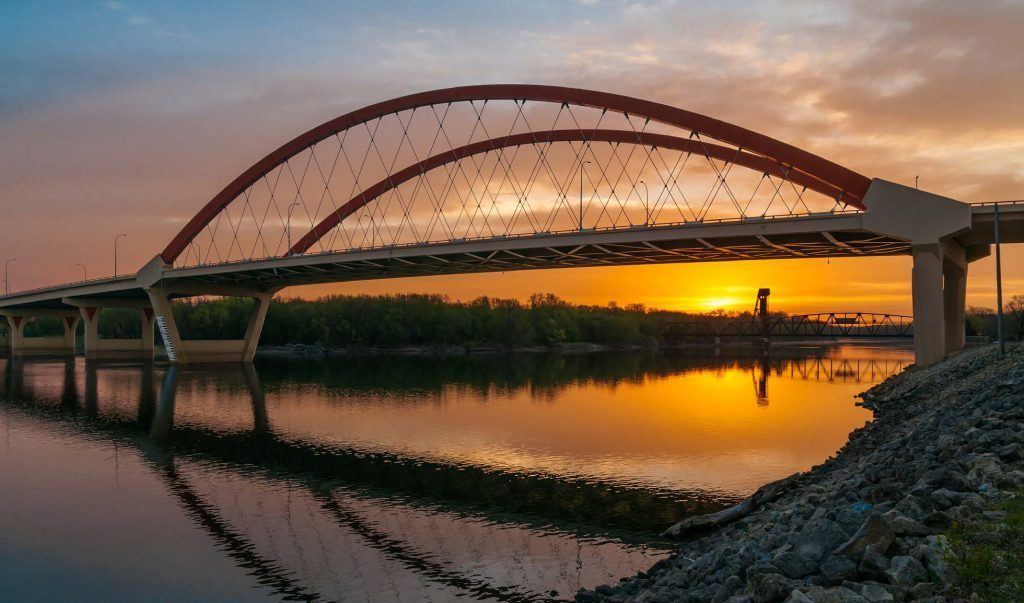
Photograph by Aaron Seefeld
Self Check Quiz:
- What types of scenes can benefit from including a river in the shot?
- True or false: A river should be photographed with a wide-angle lens.
- Why is camera stabilization important, even when shooting in the daytime?
- When trying to photograph a barge or riverboat, how can you minimize the chance of waiting all day and going home without seeing anything?
- True or false: Landscapes are the same year-round, so there’s no need to revisit a location once you’ve shot there.


